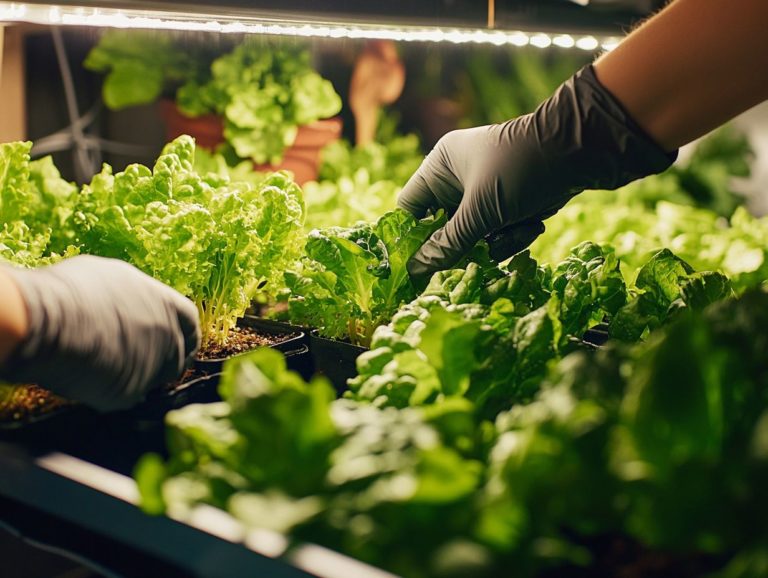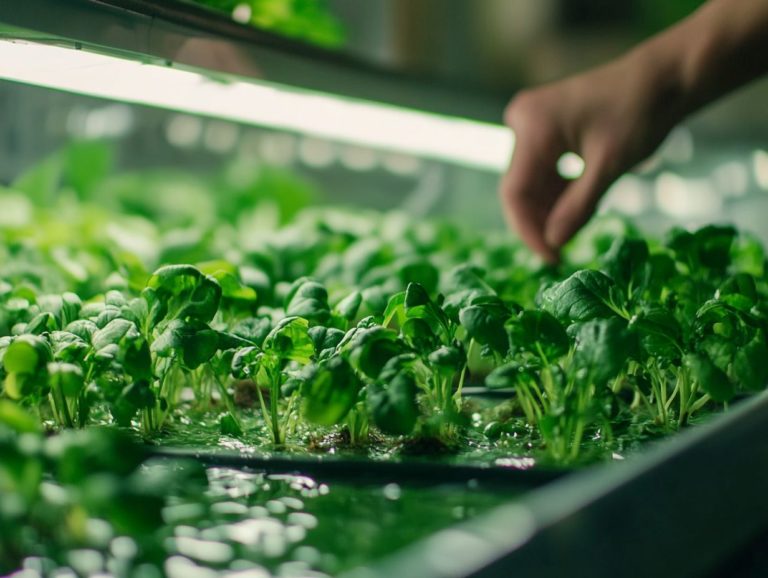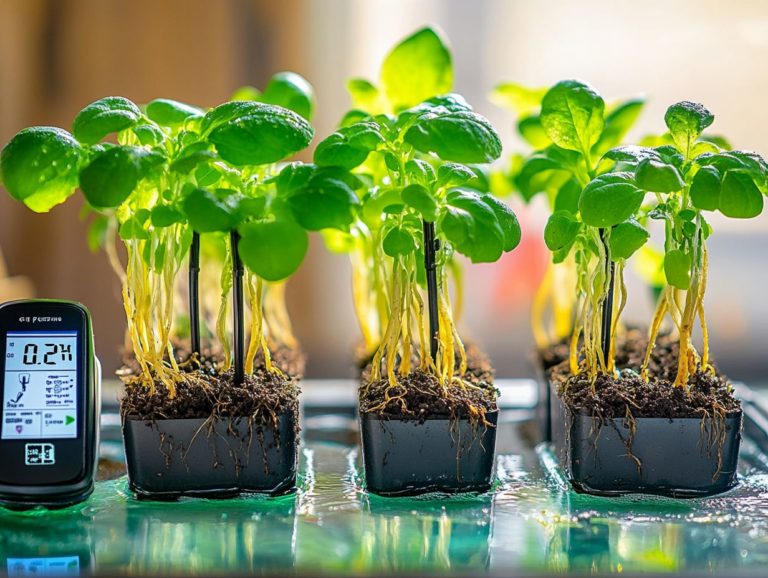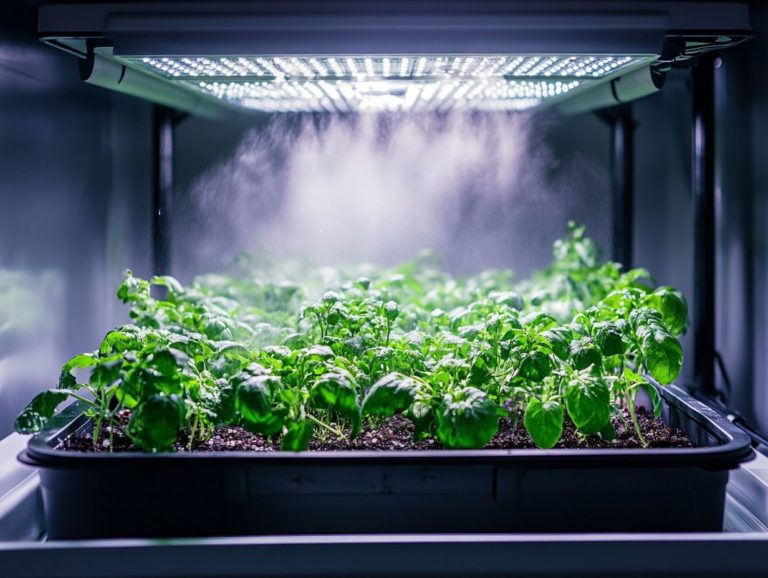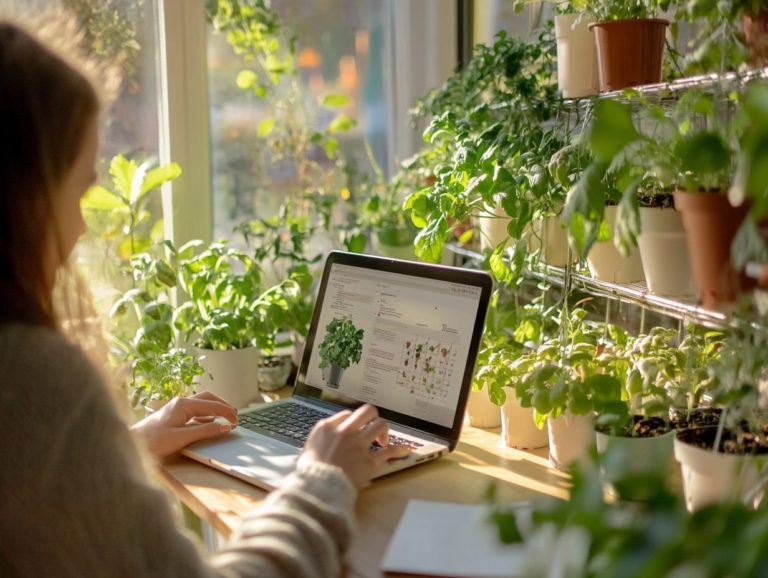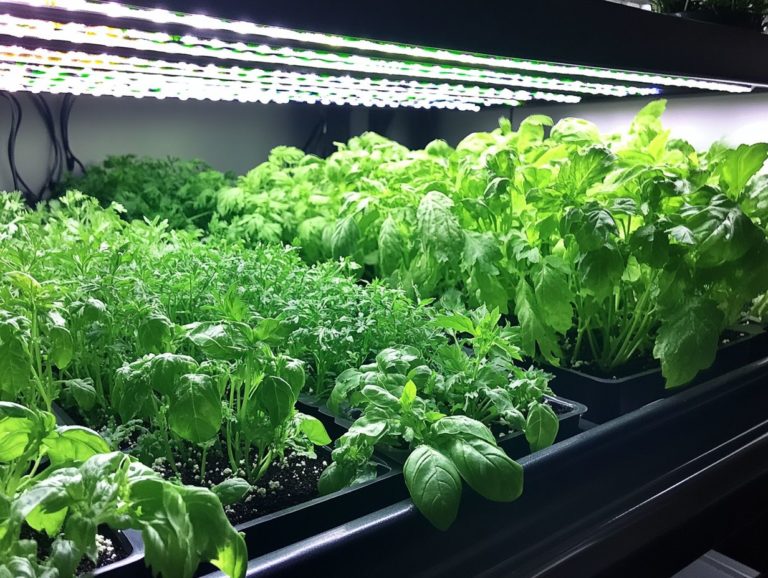What Size Grow Space Do I Need for Hydroponics?
In the realm of modern gardening, hydroponics emerges as a groundbreaking method that enables plants to flourish without the need for soil. As your interest in this technique grows, you may find yourself pondering the ideal size for your hydroponic grow space.
This article delves into the essentials of hydroponics, highlighting its many benefits and the crucial factors to consider when crafting your perfect setup. It also compares various hydroponic systems, offering insights to maximize efficiency and ensuring you re equipped to nurture a thriving garden.
Ready to transform your gardening experience? Let s explore!
Contents
Key Takeaways:
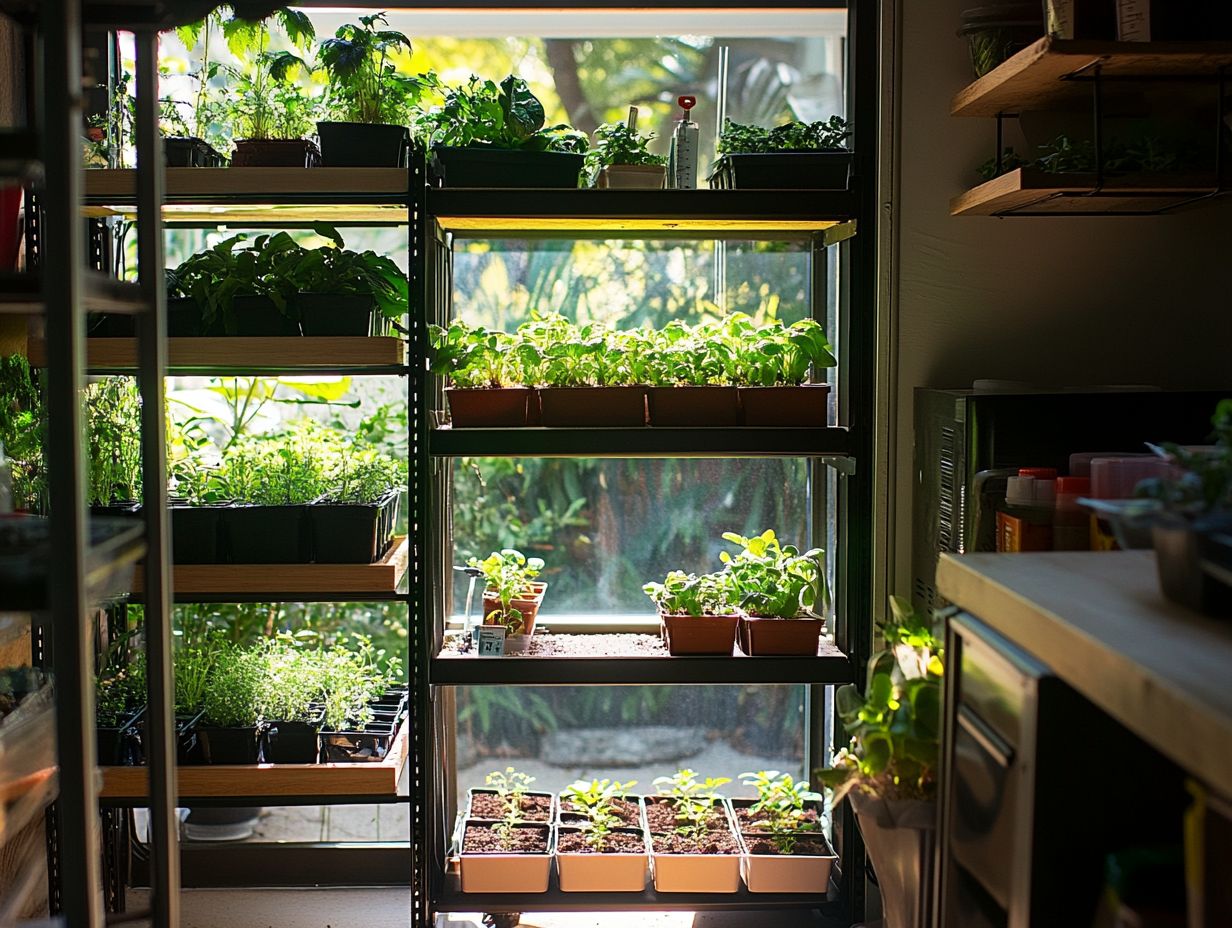
- Choose compact plants that fit your space and budget for optimal results.
- Consider different hydroponic system options and compare space requirements for the best fit.
- Calculate the necessary space for plants and equipment to optimize your grow tent.
What is Hydroponics?
Hydroponics presents an innovative approach to cultivating plants without the need for soil. It relies on a system that allows plants to grow in water with nutrients instead of soil, delivering essential nutrients directly to the roots through nutrient solutions special mixes that provide essential elements for plant growth. This method grants you greater control over growing conditions, allowing you to fine-tune variables such as pH levels and nutrient circulation. The result? Enhanced growth and health for your plants.
With techniques like deep water culture and nutrient film technique, hydroponics opens up a world of possibilities for efficient and sustainable agriculture, particularly in compact spaces where traditional gardening simply won’t do.
You ll find various hydroponic systems, including aeroponics and drip systems, each functioning in its own unique way to nourish plants. For example, aeroponics suspends plants in air, misting them with nutrient-rich water, promoting robust growth rates while minimizing water usage. Each system brings distinct advantages, like quicker growth cycles and optimized space efficiency.
Environmental controls are essential in these setups, ensuring that light, humidity, and temperature levels are just right for your plants. Effective root support mechanisms are also crucial, offering stability while allowing roots to access vital nutrients with ease.
Compact designs further enhance yield potential, making hydroponics a practical and exciting choice for urban gardeners and agricultural innovators alike.
Benefits of Using Hydroponics
The benefits of using hydroponics are truly remarkable, offering everything from higher yields to optimized space efficiency, making it a fantastic choice for both budding and seasoned gardeners.
For example, systems like the SuperPonics 8 provide a cohesive approach by merging various hydroponic methods, ensuring your plants receive the perfect balance of nutrition and oxygen throughout their growth cycle. As a result, you not only witness accelerated growth rates but may also discover a higher nutrient density in your crops. Numerous case studies highlight increases in vitamin content for vegetables grown in hydroponic systems compared to traditional soil farming.
By creating a controlled environment, you’ll find that the risk of pest infestations diminishes significantly, as you can tailor conditions to naturally deter pests. Products like Active Aqua further enhance your hydroponic journey, offering efficient water management solutions that minimize waste while maximizing yield.
You can enjoy healthier and more vibrant crops, leading to a more sustainable and rewarding gardening practice.
Factors to Consider for Grow Space
When you re establishing a grow space for hydroponic gardening, it s essential to consider several critical factors to create the ideal conditions for your plants. Think about the available space, the specific needs of the plants you intend to cultivate, and the environmental controls required to maintain perfect lighting and air circulation.
A thoughtfully designed grow room can support a range of systems, from deep water culture to screen of green (SCROG) methods, which help maximize light exposure, all while maximizing space efficiency and allowing compact plants to flourish in their designated areas.
Plant Selection and Space Requirements
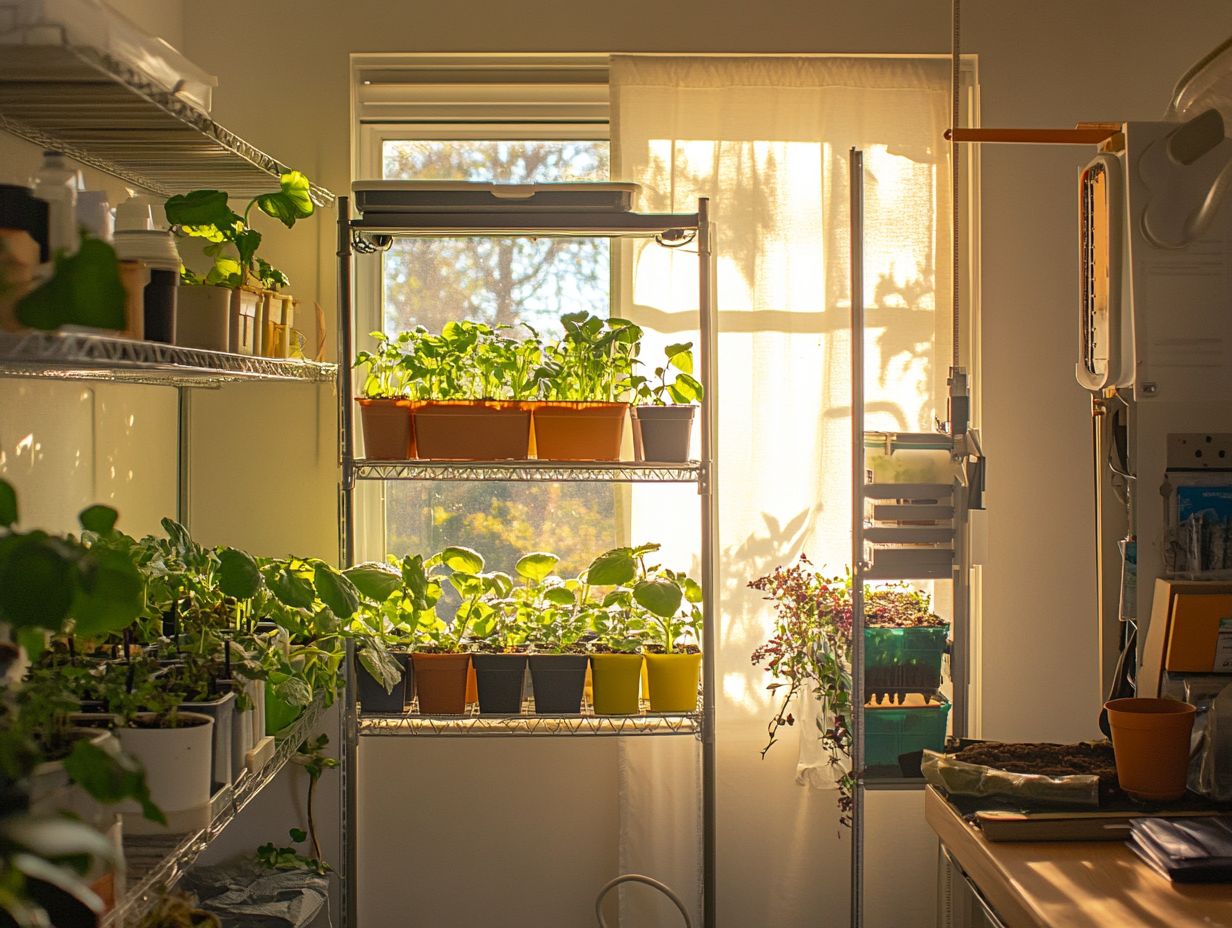
Choosing the right plants for your hydroponic setup requires understanding plant selection and space requirements. Opt for compact options like specific varieties of tomatoes, cucumbers, and basil. These plants thrive in smaller environments and yield impressive results.
Provide proper hydroponic nutrients and a suitable growing medium, such as perlite or coco coir. These elements ensure plants flourish, giving their roots the necessary support and nutrients.
Consider each plant’s growth habits. Some plants spread out while others grow vertically. This will affect how well they fit into your space and the maintenance setups you choose.
Tailoring nutrient solutions to meet the unique demands of each plant type is critical. A balanced approach boosts growth and health significantly.
Don t overlook the compatibility of different growing mediums. Some plants thrive in airy substrates, while others prefer moisture-retaining environments. Keep these factors in mind to create an optimal hydroponic ecosystem.
Available Space and Budget
Evaluating your available space and budget is crucial for planning your hydroponic setup. These factors influence your choice of parts and system design directly.
Using a grow tent can be an energy-efficient solution. It helps maintain ideal environmental conditions while maximizing your space.
Carefully assess your financial resources. This will help you select high-quality components that ensure your hydroponic system functions effectively over time.
Establish a budget by considering initial equipment costs, like grow lights, water pumps, and ventilation systems. Prices vary significantly, so research options that offer durability without straining your wallet.
Look for deals on second-hand items that still perform well. Creating a checklist of necessary features and focusing on versatile equipment will guide your purchasing decisions.
Types of Hydroponic Systems
Several types of hydroponic systems are available, each offering distinct advantages and methods. Options include deep water culture, nutrient film technique, and systems for vertical gardening.
Understanding the differences between these systems helps you make an informed choice. Whether you seek a compact system for small spaces or a larger setup for high yields, you ll find a solution that aligns with your gardening style.
Comparison of Different Systems
Comparing different hydroponic systems is crucial for you to determine which method aligns best with your gardening goals and available resources. If you’re just starting out, deep water culture offers a straightforward approach. It provides direct access to nutrient solutions that promote rapid plant growth.
On the other hand, nutrient film technique, a method that uses a thin film of water to deliver nutrients, allows for more efficient nutrient circulation and is often preferred for larger setups. Each system has its unique advantages, making it essential for you to assess your growing conditions and preferences before making a decision.
The choice between systems can influence not only your initial setup but also your ongoing maintenance and the variety of plants that can thrive in your garden. For example, while aeroponic systems where plants grow in air and nutrients are misted directly onto the roots require a bit more technical know-how to manage, they can significantly boost growth rates by enhancing oxygen exposure to the roots. Meanwhile, wick systems are incredibly easy to set up and maintain, making them appealing for small-scale gardeners who prefer low maintenance. However, they may encounter slower growth and a more limited plant variety.
By analyzing specific data, such as growth cycles and nutrient efficiency, you can make informed decisions tailored to your individual constraints and preferences, setting yourself up for your hydroponic success.
Determining the Right Size for Your Grow Space
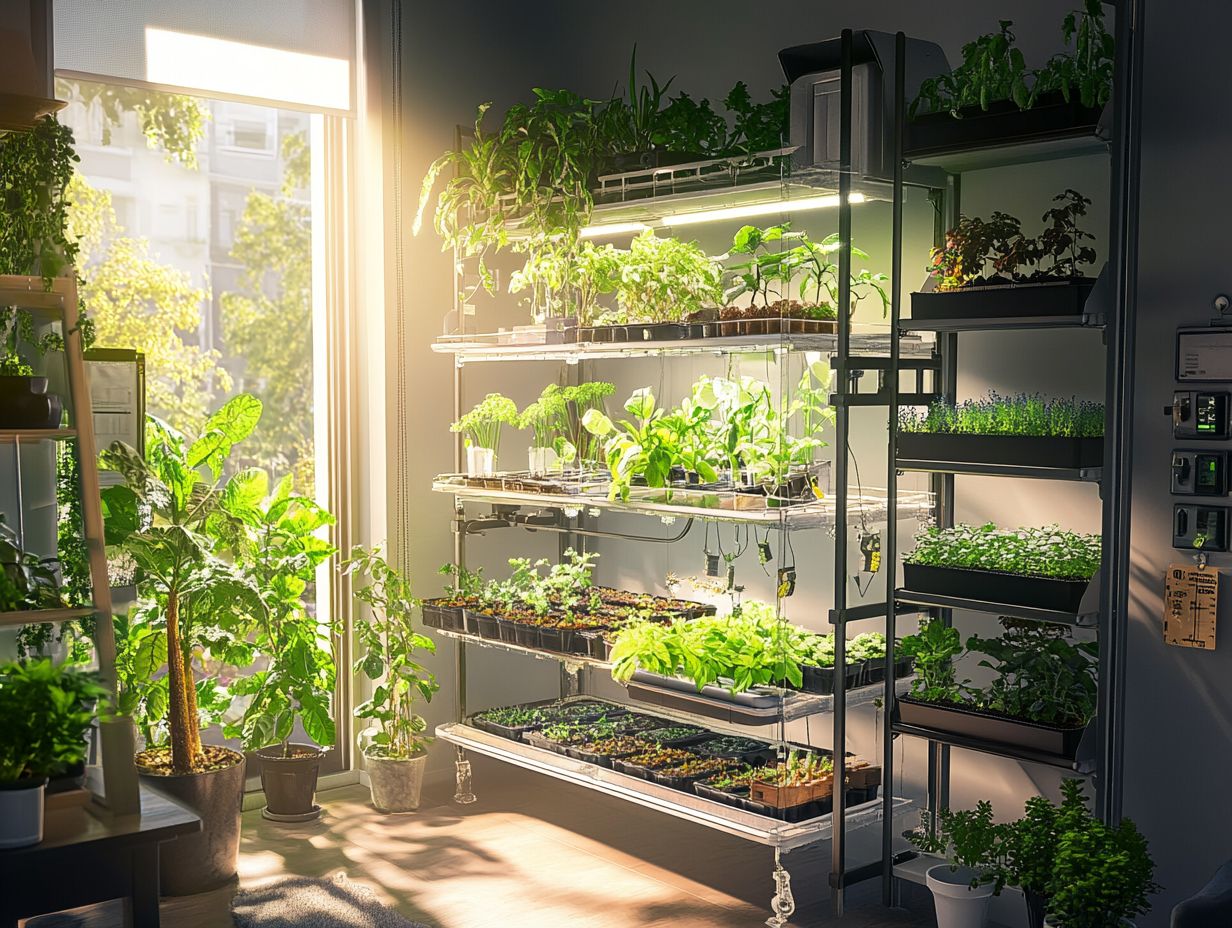
Determining the ideal size for your grow space is essential for achieving optimal plant growth and ensuring the efficient operation of your hydroponic system. Think about factors like the size and number of plants you plan to cultivate, as well as the layout of your environmental controls. This thoughtful approach will help you create a harmonious and productive growing environment, enhancing your overall hydroponic gardening experience.
A meticulously planned grow space not only fosters healthy plant development but also enhances the effectiveness of your lighting conditions and air circulation.
Calculating Space Needed for Plants and Equipment
Calculating the space needed for your plants and equipment in your hydroponic setup is crucial to prevent overcrowding and ensure every component operates at its best. As you plan your layout, consider the mature size of your plants alongside the necessary equipment think grow lights, water pumps, and ventilation systems.
A compact design that makes the most of vertical space can significantly boost your yield while keeping your grow area organized and efficient. Start by measuring the space you have available, paying attention to both length and width.
Then, sketch a basic layout that includes pathways between your rows of plants and access to essential equipment. If you’re working with limited space, vertical gardening can be a game-changer; consider incorporating tiered shelves or wall-mounted planters to maximize height.
Utilizing tools like plant stands and trellises will help you optimize your layout, particularly for vine crops. Don t forget to consider airflow strategically arranging your equipment will help prevent overheating and create a healthier environment for your plants to thrive.
Tips for Optimizing Grow Space
Optimizing your grow space is essential for maximizing both yield and efficiency in hydroponic gardening. By implementing effective air circulation, establishing proper lighting conditions, and strategically placing your plants, you can greatly enhance plant growth and overall productivity.
Investing in a compact hydroponic system equipped with advanced environmental controls enables you to craft the perfect environment for a variety of plants. This ensures they receive the vital support and resources needed for robust development.
Don t wait! Start optimizing your grow space today for better yields!
Maximizing Yield and Efficiency
Maximizing yield and efficiency in your hydroponic garden requires a multifaceted approach. This focuses on optimal hydroponic nutrients, environmental controls, and strategic plant management.
By properly calibrating pH levels and ensuring adequate nutrient delivery, along with utilizing high-quality grow lights, you can achieve significant boosts in productivity.
Implement effective pest prevention measures and maintain your plants regularly to further enhance the overall output of your hydroponic system.
Pay close attention to the right mix of nutrients, as different growth stages demand varying concentrations to support robust development.
By adopting a comprehensive lighting strategy with timers and adjustable spectrums, you can create the perfect photosynthetic environment for your plants.
Regulating temperature and humidity is crucial; even small adjustments can have a profound impact on plant health.
Regularly monitor these factors. Coupled with proactive pest management strategies, like introducing beneficial insects, this will ensure a thriving ecosystem in your garden.
This all-in-one strategy not only boosts your yield but also supports a greener future, making your hydroponic garden a true testament to your gardening prowess.
Watch this video to learn more about optimizing your hydroponic garden!
Frequently Asked Questions
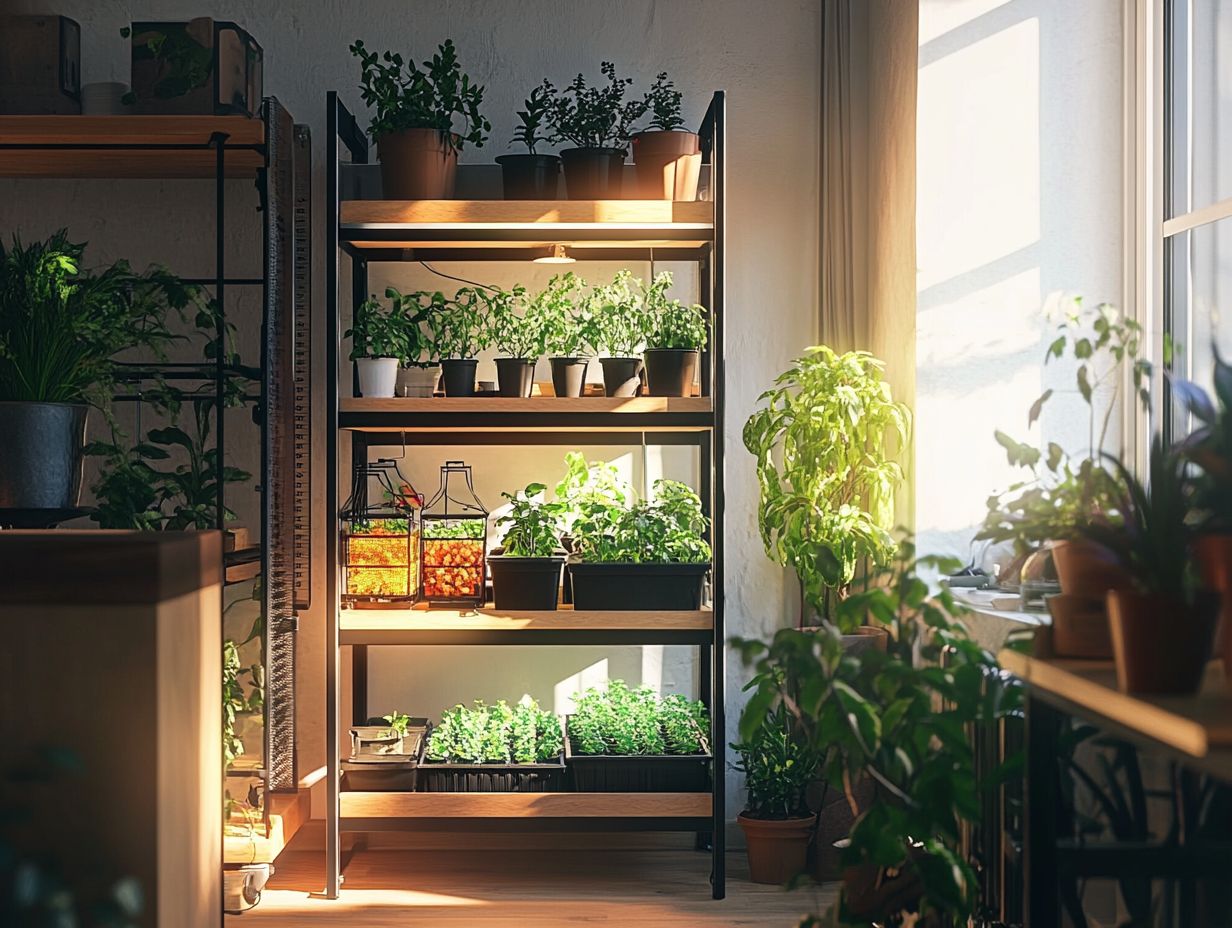
Got questions about hydroponics? You’ve come to the right place!
What Size Grow Space Do I Need for Hydroponics?
The size of your grow space for hydroponics will depend on a few factors: the type of plants you’re growing, the number of plants, and the type of hydroponic system you’re using. A general rule of thumb is to allocate at least 1 square foot of space per plant.
Can I Use a Small Space for Hydroponics?
Yes, you can definitely use a small space for hydroponics! One of the main benefits of hydroponics is that it can be done in compact areas. You can even use vertical space to maximize your growing area.
What if I Want to Grow Larger Plants?
If you want to grow larger plants like tomatoes or peppers, you will need a bigger grow space. These plants require more room for their roots to grow and for support structures, so plan accordingly when choosing your grow space.
Do I Need a Separate Space for My Hydroponic System?
Not necessarily! You can use a dedicated space for your hydroponic system, but it doesn’t have to be a separate room. Setting up your system in a corner of a room or even on a balcony or patio is perfectly fine.
How Much Space Do I Need for a Nutrient Reservoir?
The size of your nutrient reservoir will also depend on the number of plants and the system you’re using. Generally, you will need about 5-10 gallons of water per plant, so make sure your reservoir is large enough to accommodate that amount.
Can I Grow Different Plants in the Same Space?
Absolutely! One of the great things about hydroponics is that you can grow different types of plants in the same space. This is because you have more control over the nutrients and environment, allowing you to tailor it to each plant’s specific needs.
To summarize, maximizing yield and efficiency in your hydroponic garden involves a comprehensive approach. Start your hydroponic journey today!

